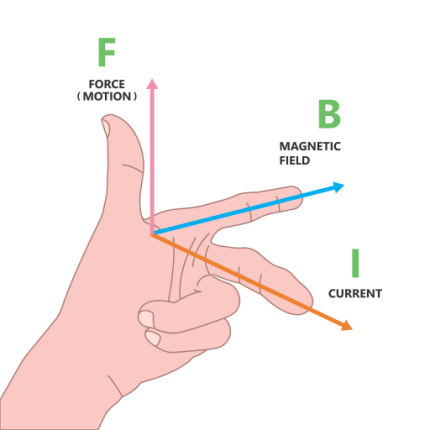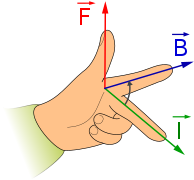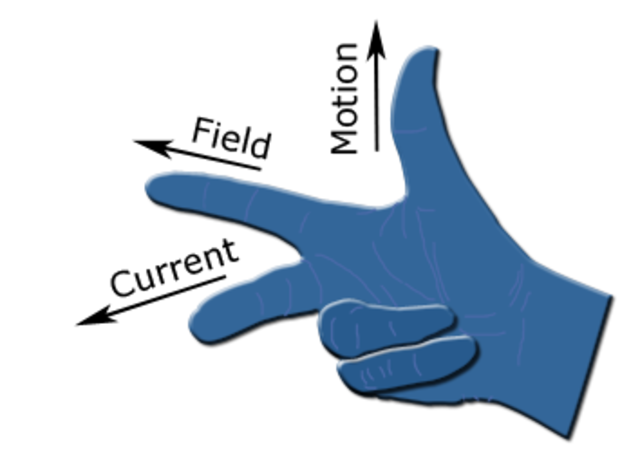Flemings Left Hand Rule and Right Hand Rule
Electromagnetic induction happens because of Fleming’s Left hand rule and through Fleming’s right hand rule. John Ambrose Fleming was the one who came up with the idea of right hand thumb rule and left hand thumb rule. These simple rules give us a sense how electricity is generated or how forces act on current carrying wires in motors and generators. These rules make it easy to use directions of your thumb, your forefinger, and your middle finger to tell the direction of a force, current, or motion in electromagnetic systems.
JEE Main/NEET 2027: Physics Important Formulas for Class 10
NEET 2025: Mock Test Series | Syllabus | High Scoring Topics | PYQs
JEE Main: Study Materials | High Scoring Topics | Preparation Guide
JEE Main: Syllabus | Sample Papers | Mock Tests | PYQs
- Fleming Left-Hand Thumb Rule
- How to Apply Fleming's Left-Hand Rule?
- Fleming Right Hand Rule
- How to Apply Fleming's Right-Hand Rule?

Fleming Left-Hand Thumb Rule
Fleming's Left-Hand Thumb Rule is used to determine the force experienced by a current-carrying conductor when placed in a magnetic field. It is majorly used in understanding the working principle of electric motors.
On the thumb, forefinger, and middle finger, a left hand can be used to denote three mutually orthogonal axes. When the thumb, center finger, and forefinger of the left hand are arranged at right angles to one another, the thumb points in the direction of magnetic force, the center finger points in the direction of current, and the forefinger points in the direction of a magnetic field.
How to Apply Fleming's Left-Hand Rule?
Stretch the thumb, middle finger, and index finger of the left hand to form a 90-degree angle (perpendicular to each other), as shown in the figure:
Then,
- Forefinger will represents the direction of the magnetic field (B), from north to south.
- Middle finger will represents the direction of the current (I), from positive to negative.
- Thumb will indicates the direction of the force (F) or motion of the conductor.

Also Read-
- NCERT Exemplar Solutions for All Subjects
- NCERT Notes For All Subjects
- NCERT Solutions for All Subjects
Fleming's Left-Hand Rule in Electric Motors
When a moving conductor is placed inside a magnetic field, a current is induced in it, according to Faraday's law of electromagnetic induction.
- There will be a link between the direction of applied force, magnetic field, and current if the conductor is forcefully moved inside the magnetic field.
- It is mostly utilized in the operation of electric motors.
- The rule's principal goal is to determine the direction of motion in an electric motor.
- The direction of motion in an electric motor is determined by the popular Fleming's left-hand rule, which is based on Faraday's law of electromagnetic induction.
|
Related Topics |
Application of flemings left hand rule
1. We can identify the direction of force exerted on the proton using Fleming's left-hand rule.
Because the proton is going towards the east, the current is also moving towards the east. The force is directed towards the north since the magnetic field is acting downwards. As a result, we can say the force is acting northward.
2. We may identify the direction of the magnetic field acting on the electron using Fleming's left-hand rule. An electron has a negative charge, as we all know. The current runs in the opposite direction, down, when an electron moves upward. The force operating on the electron is thought to be in the direction of the south. As a result, the magnetic field is oriented towards the east.
Fleming Right Hand Rule
Fleming right hand rule is used to determine the direction of induced current when a conductor moves in a magnetic field. It is based on Faraday's Law of Electromagnetic Induction and is majorly applied in generators.
How to Apply Fleming's Right-Hand Rule?
Stretch out your thumb, forefinger, and middle finger of your right hand such that they are perpendicular to each other as demonstrated in the following figure:

Then,
Thumb: It moves in the same direction as the conductor.
Forefinger: Represents the direction of the magnetic field (BBB), from north to south.
Middle finger: Indicates the direction of the induced current (III).
Applications of fleming's right hand rule
- The direction of induced current within an electric generator is determined by Fleming's right hand rule.
- This rule is used in dynamos used in bicycles, or similar, in which the motion is converted into electrical energy by means of their electric current.
- Fleming's Right Hand Rule is used by devices such as wind turbines and hydroelectric generators to figure out how to convert mechanical energy (say wind movement, or water movement) into electricity through electro magnetic induction.
- This rule is the basis of operation of magnetic sensors used in automotive and industrial applications and determine induced current.
Frequently Asked Questions (FAQs)
The left-hand rule of Fleming aids with movement prediction. A current-carrying coil of wire twists when it is put in a magnetic field. The motor effect is what this is known as.
With the use of the Right Hand Thumb Rule, the direction of magnetic field lines produced by current flow can be hypothetically calculated. Clasp Rule is another term for right hand thumb rule.
The force is greatest when the current direction is 90 degrees from the magnetic field direction for any given combination of current and magnetic field strength. If the current and magnetic field are parallel to one another, there is no motor effect force.
Also Read
22 Jul'25 09:27 AM
02 Jul'25 05:02 PM
02 Jul'25 04:46 PM
02 Jul'25 04:46 PM
02 Jul'25 04:33 PM
02 Jul'25 04:31 PM
02 Jul'25 04:31 PM
02 Jul'25 04:29 PM
02 Jul'25 04:26 PM

